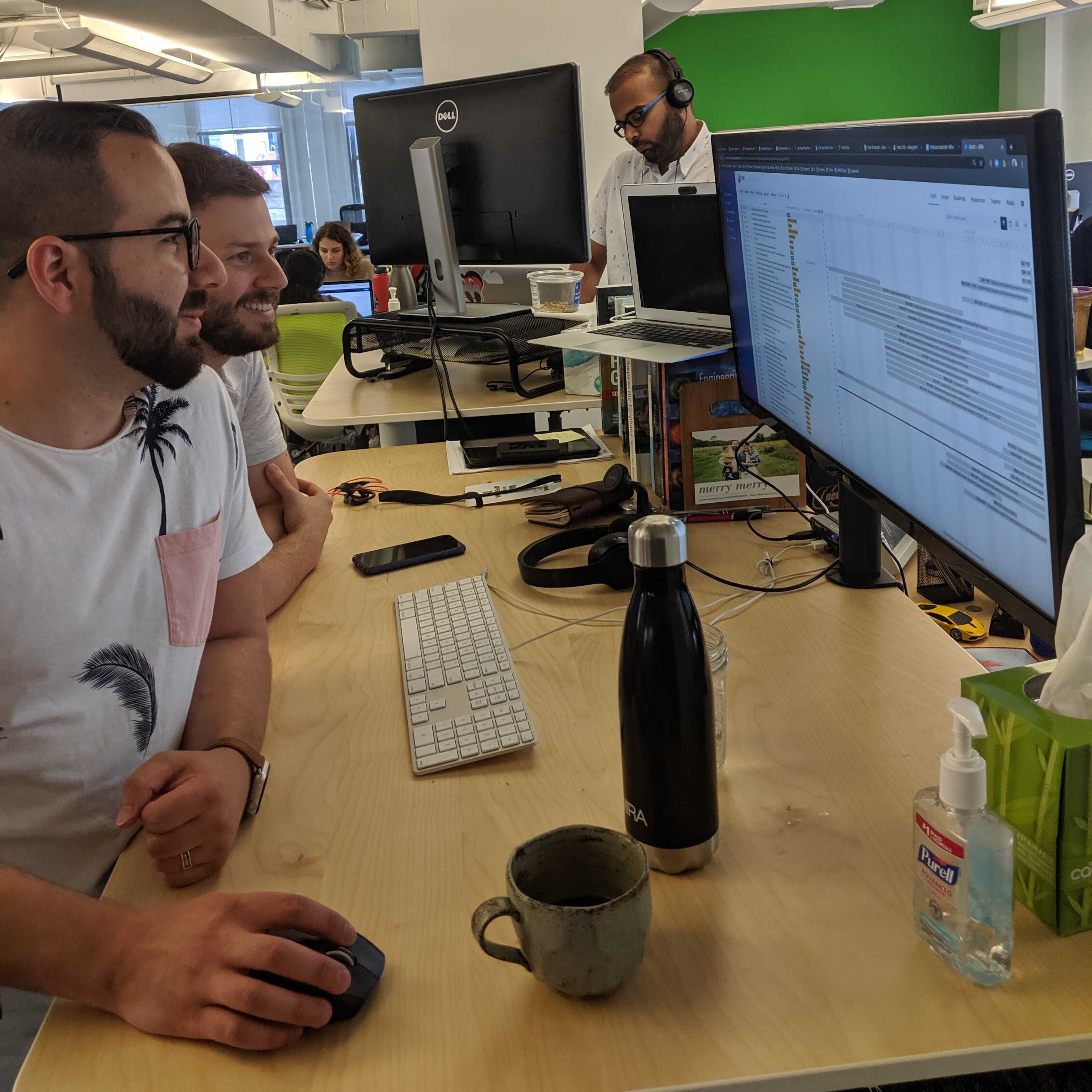3,700 people around the world are killed every day in road traffic crashes: 80-90% of road crashes are due to preventable driver behaviors, like distracted or drowsy driving. (Source: WHO) Dangerous driving continues to be a problem on the world’s roadways: cars may be getting smarter and safer, but it hasn’t necessarily led to safer roads. Human error is still a major problem contributing to crashes worldwide, and Affectiva’s Human Perception AI is providing automakers with a critical understanding of what’s happening with people inside the car to help improve road safety.
In our latest Affectiva Asks podcast, we interview Affectiva Product Manager Mike Gionfriddo. During the interview, he talks to us a bit about his background in startups focused on in-vehicle technology, what he sees as challenges within the automotive industry and how Affectiva’s Human Perception AI technology aims to improve road safety.

Can you describe your current role and what you're working on at Affectiva?
The way I see the product management role is talking with customers and with the market to understand exactly what the market needs, and understand why the market needs those things. From there, we define product requirements and work with the in-house engineering team and development team to build a product that will meet those needs. At Affectiva, we also have the cross function of AI integrating into automotive, there's a lot of unique challenges that come along with that.
What are the key challenges the industry faces in terms of improving road safety?
Adding AI into the auto industry is something that's starting to increase more and more as this technology becomes available. As far as road safety goes, there are a lot of sensors that are being added into the vehicles and that's creating a unique opportunity to improve safety all around the vehicle, including cameras being focused on the driver to ensure that the driver is actually aware of what's going on and paying attention.
What are the opportunities for shaping new in-cabin sensing solutions and what role will Affectiva technology play in that?
As far as in-cabin sensing goes, one of the major products that I work on from the driver monitoring side is drowsiness detection. There's a camera that's near the steering wheel which looks at the face of the driver. From being able to look at their entire face, which is where we can leverage our years of Human Perception AI and Emotion AI technology, we can determine drowsiness as it unfolds over time. Drowsiness isn't something that instantaneously happens where you just fall asleep; you progress through these states of drowsiness. By looking at the face, we can track as those states of drowsiness unfold—the best signal for drowsiness is the eyes. You look at someone's eyes when they're getting drowsy, they blink more and their blink is slower, which are very clear signals of drowsiness.
Access to the eyes is not always available, especially in an automotive setting where people wear different kinds of glasses, sit at different heights from the camera, or the camera angle varies. As a result, being able to look at the entire face when the eyes aren't available allows for a more robust drowsiness detection system. This is a huge application for improving safety on the driver monitoring side of things—and beyond that, being able to see the entire face can help reduce false positives. For example, if someone is squinting because the sun's shining in their eyes, or if someone is laughing and their eyes are closed, you don't want the drowsiness system to beep at you and tell you to go get a cup of coffee, because that's going to make the user very upset.
What about driver distraction?
Distraction is also a very good solution for computer vision looking at the driver. Incorporating that information holistically with all the other sensors in the vehicle give a very clear picture of if someone is distracted or not.
I think the challenge with the distraction is more what does the car do once it knows the driver's distracted? For example, if somebody is swerving, the vehicle's radar systems and camera systems can detect that they are veering out of your lane. That's probably a distraction. You could have interior cameras that are looking at the driver and determine that they are not looking at the road, or they keep looking in the passenger or they're talking on their cell phone. There's an infinite amount of distraction mechanisms. But by combining all of these sensors, you can have a very clear, definitive understanding of if someone is distracted or not and how distracted they are. Once you have this understanding, the next step is determining asking questions like, why are they distracted? How are they distracted? How do we bring their attention back to the road?
That problem is a little harder to solve, and it's interesting seeing that the different approaches that each OEM takes to solving that problem philosophically. I think the short-term solutions are a little different than the long-term solutions. For example, somebody talking on their cell phone would be a different adaptation than eating or texting. So having the right adaptation is really important, and looking at the driver can help understand what type of distraction that person is dealing with.

What do you think some of the technical hurdles are when you are thinking about building these systems?
The auto industry receives a lot of their revenue today from per unit sales—so with that, the cost of the system is really important when considering final purchase price for individual consumers. This means that from an AI standpoint, we have to operate on processors and embedded systems with less overall resources (such as RAM, storage capability, and processing power.)
In order to prove the AI with a large amount of robustness or reliability, you really need to include a lot of data in training your models. This can ultimately make your model bigger and more complex in order to keep these accuracy targets, but there's pressure to balance high performance with these lesser resources. Constantly balancing those two things is a huge challenge that the industry has as it starts to use AI for road safety systems.
What about AI systems to help improve road safety for fleets (i.e., truck drivers) - how can something like that be helpful?
We've been seeing a lot of interest for driver monitoring for fleets recently, especially for vehicles like buses. Occupants in a bus are very valuable cargo: so making sure that the driver is fully awake, paying attention and not distracted is really important to ensure the safety of themselves as well as all the occupants.
For truck drivers, there's a lot of focus on using cameras for driver training to be able to teach a driver how to avoid certain situations. For monitoring, this enables intervention when the driver is falling asleep: dispatch can give them a phone call to see if they need a break, for example. We have the ability to detect whether these drivers are drowsy or distracted, and it's in society's best interest to protect the occupants of the vehicle in those cases.
I was curious if you have any recommendations for listeners on events to attend, books to read, publications to follow based on what you're looking at every day?
As far as events go, I definitely recommend that people check out our Emotion AI Summit coming up on October 15th this year. It will be really interesting to see how human-centric AI is going to be used in day-to-day life. From Affectiva’s perspective, our Human Perception AI looks at vehicle occupants and interprets how they're feeling emotionally, how awake they are, if they are paying attention, what devices they're interacting with, and more. Having this full understanding of what a human is doing will ultimately lead us to understand other intent, which is going to be very valuable in creating remarkable user experiences.






